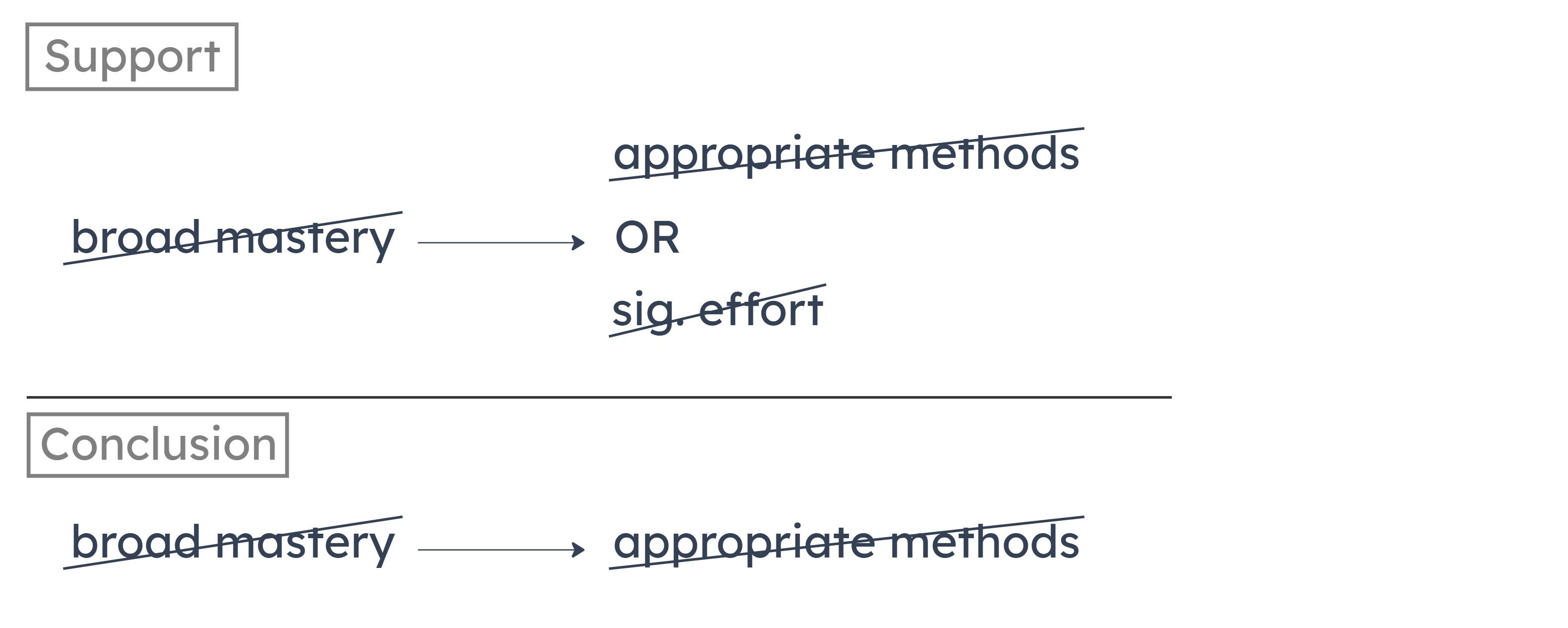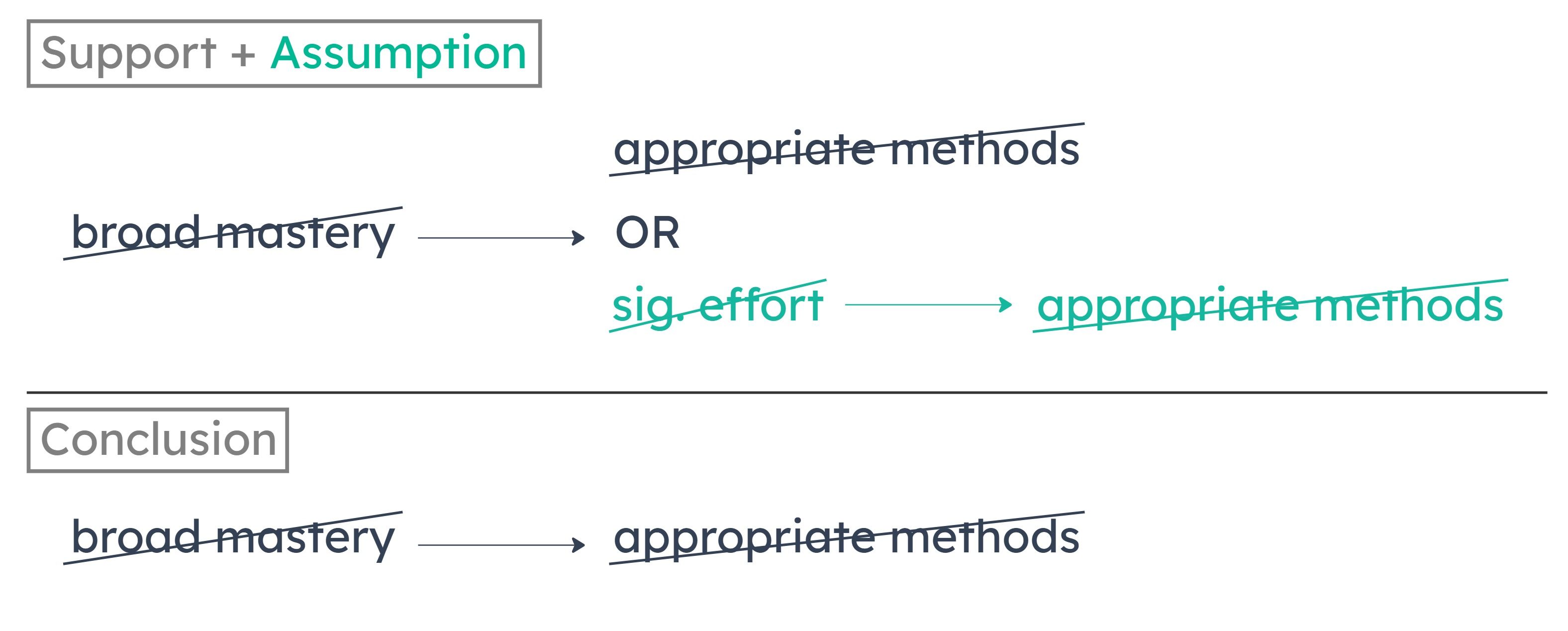Company president: Whenever you subcontract the manufacturing of a product, you lose some control over the quality of that product. We do subcontract some manufacturing, but only with companies that maintain complete control over the quality of the products they supply.
Summary
Company president:
Subcontracting manufacturing means losing some control over product quality.
We do subcontract some manufacturing.
We only subcontract with companies that have complete control over the quality of their products.
Very Strongly Supported Conclusions
The president’s company loses some control over its product quality.
The company’s subcontractors do not lose any control over their product quality.
The company’s subcontractors do not subcontract their manufacturing.
A
When the president’s company subcontracts manufacturing of a product, it does not allow the subcontractor to further subcontract manufacturing of that product.
Very strongly supported. Subcontracting manufacturing means losing some control over product quality. But the company’s subcontractors “maintain complete control over the quality of the products they supply.” So the subcontractors must not further subcontract their manufacturing.
B
Companies that subcontract the manufacturing of products are often disappointed in the quality of those products.
Unsupported. Subcontracting manufacturing reduces control over product quality, but it doesn't necessarily mean lower quality. It also doesn’t mean that companies will be disappointed with the quality of products that have been manufactured by a subcontractor.
C
The company president insists on having as much control as possible over the quality of the company’s products.
Anti-supported. Subcontracting manufacturing means losing some control over product quality. Since the company president subcontracts some manufacturing, he likely doesn’t insist on having as much control as possible over product quality.
D
When consumers know that a product has been manufactured by a subcontractor, they are generally dubious about the product’s quality.
Unsupported. Subcontracting manufacturing reduces control over product quality, but it doesn't necessarily mean lower quality. It also doesn’t mean that customers will question the quality of a product that has been manufactured by a subcontractor.
E
When a company manufactures some products in-house and subcontracts the manufacturing of others, the products made in-house will be of uniformly better quality.
Unsupported. Subcontracting manufacturing reduces control over product quality, but it doesn't necessarily mean lower quality. Just because a product is made in-house doesn’t ensure that it will be of better quality.

The conclusion would follow if we assumed that when there’s a lack of significant effort, there must also be a lack of appropriate methods. In that case, no matter what, a lack of broad mastery always means a lack of appropriate methods.
A
As long as secondary school students are taught with methods appropriate to their learning styles, they will devote significant effort to their studies.
